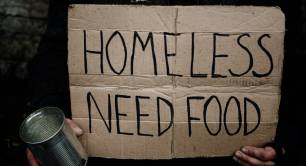Obsessing over government savings unhealthy for SIBs progress say Bank of America and Bridges Ventures
Too much focus on the potential savings of social impact bonds can limit their success in delivering crucial social outcomes, finds a report released today.
Social Impact Bonds are catching on as they become regarded as innovative financial partnerships that can save governments money. A social impact bond (in fact a public-private partnership not a bond) uses private capital to fund a social sector organisation as it delivers a contract to address a social issue for the government.
The report – Choosing social impact bonds: a practitioner’s guide – has been released by Bank of America Merrill Lynch and Bridges Ventures to provide clarity on social impact bonds and to help people understand the global momentum behind this form of social investment.
Emilie Goodall, director of projects at Bridges Ventures, told Pioneers Post: “If you focus on future capital savings as the main driver for social impact bonds it can actually limit their application.
“Whereas if you focus on the ability of these models to drive better outcomes, which may or may not generate future capital saving, then that opens them up for more wider potential use.”
Looking at examples all over the world, the report outlines what social impact bond success looks like in a variety of different contexts.
In the municipality of Rotterdam in the Netherlands a bond involving a social enterprise called the Buzinezzclub Rotterdam and the Start Foundation – in similar vein to the Department of Work and Pension’s Innovation Fund in the UK – is focussing on reducing youth unemployment. It is a relatively small social impact bond with a capital amount of €680,000 that will support 150 young people.
On the other end of the spectrum a social impact bond in New York state is taking inspiration from existing models – the Peterborough bond for example – and scaling them up. It is worth US$13.5m, has backing from 44 different investors and aims to work with 2,000 men with previous convictions to help them find employment and reduce reoffending rates.
The report highlights that even though you’ve got different contexts and varying roles that the state is playing, there are clear similarities between social impact bonds around the world. In many cases, such as in the New York state example, savings are likely to be made across a range of departments. The Department of Labor will make savings because these convicted men are going into employment, but there will also be savings in other areas, for example the cost of these men returning to prison is removed.
The issue with this is that when savings are made across a number of different departments it can be difficult to calculate and demonstrate the precise savings made. Departments paying into the bond might want to see direct savings to them. This might not be the case even though the social value is being achieved.
“Not all of the social impact bonds we’ve seen do generate future capital savings. Technically the UK Government's homelessness social impact bond might actually lead to extra costs – if you’re getting rough sleepers into longer term accommodation, into really tackling underlying health problems, perhaps access to rehabilitation services then that might actually cost.
“It might reduce A&E admissions so you’ve got some savings but you’ve also got the costs of doing it. It's really about doing it because of a belief that this is something we should be doing. Using outcomes-focused contracts might be the best way to deliver these desired social outcomes,” said Emilie Goodall.
According to Bridges Ventures as of 2014 there are 26 social impact bonds up and running around the world and almost 100 in development. This relatively fast development has raised concerns over the effectiveness of social impact bonds, but the momentum has also been seen as extremely positive for the development of the social investment market globally.
Andy Sieg, head of Global Wealth and Retirement Solutions for Bank of America Merrill Lynch, said: “We see investors increasingly seeking opportunities that not only deliver a return on their investments but also help drive social change.
“Social impact investing has the potential to tackle some of the world’s most challenging issues, the full potential of which can only be unlocked through close collaboration between organisations, investors and facilitators.”
Photo credit: 401(K) 2012



